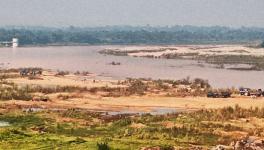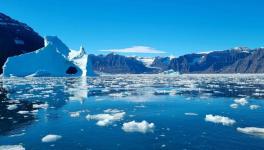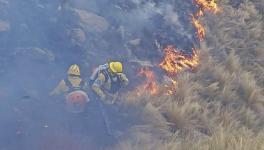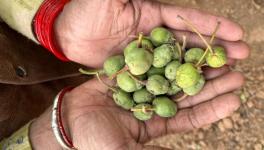Climate Change: A Trillion Trees to Save Earth!
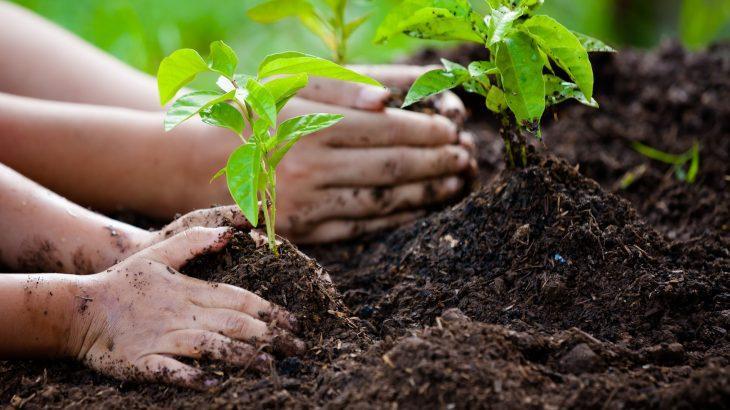
Image for representational use only.Image Courtesy : Earth.com
The time is not very far ahead when the Earth will witness an increase of 1.5 degree Celsius in the temperature above industrial levels. If the current trend of climate change continues, it will take no longer than 11 years, i.e. by 2030 that the planet Earth will witness global warming at such level. Is there any sort of immediate remedy to this? A recent study published in Science, says yes, there could be an immediate remedy and the remedy is afforestation. It says that global planting of almost a trillion trees planted in over 1 billion hectares of land could remove two-thirds of the 300 gigatons of carbon humans have added to the atmosphere since the 1800s.
Earth still has room for new forestation. The study says that excluding the cities and agricultural areas, the planet has nearly 3.5 million square miles (9 million square kilometres) to spare for trees. If done, plantation of this kind could cut carbon in the atmosphere by 25%.
The study also talks about where these trees could be planted and how much carbon they could store. Trees take up carbon in the form of carbon dioxide and use them in the process of photosynthesis which helps them grow and also stores the carbon in leaves and other parts.
Russia has the most space at 583,000 square miles, followed by the United States at 397,700 square miles—the research found. The next top countries that can have huge plantations are—Canada (302,700 square miles), Australia (223,900 square miles), Brazil (191,900 square miles) and China with 155,200 square miles.
Thomas Crowther, one of the authors of the study conducted by the Swiss Federal Institute of Technology, Zurich (ETH Zurich) said, “ We all knew restoring forests could play a part in tackling climate change, but we had no scientific understanding of what impact this could make. The team’s calculation shows clearly that forest restoration is the best climate change solution available today.”
Also read: More Commitments Needed to Tackle Climate Change, Warns UN Report
Planting trees in these regions would increase Earth’s forest coverage without affecting the land that humans use for agriculture and cities. Once these trees get matured they will contain two thirds of the carbon that have been released into the environment by human activities.
The team analysed some 80,000 satellite photographs for current forest coverage. The team then categorised the planet according to soil and climate characteristics. The categorisation helped identifying areas that were more or less suitable for different types of forest. After subtracting existing forests, and agricultural and city lands, they calculated how much of the planet could accomodate more trees.
The resulting green cover can help curb the increasingly warming climate of the planet. The recent Intergovernmental Panel on Climate Change (IPCC) report also hints that adding extra forestland would limit global warming. It says that adding an additional 3.8 million square miles of forestland could limit climate change to 1.5 degrees Celsius by 2050. But as the factors of climate change accelerate the warming process, the amount of trees needed to plant may increase than what the IPCC report calculated.
Also read: Humanity to Witness ‘Climate Apartheid’ Soon, Says UN Report
The map below shows the areas where the new forests could be planted. It excludes deserts, cities and agricultural lands:
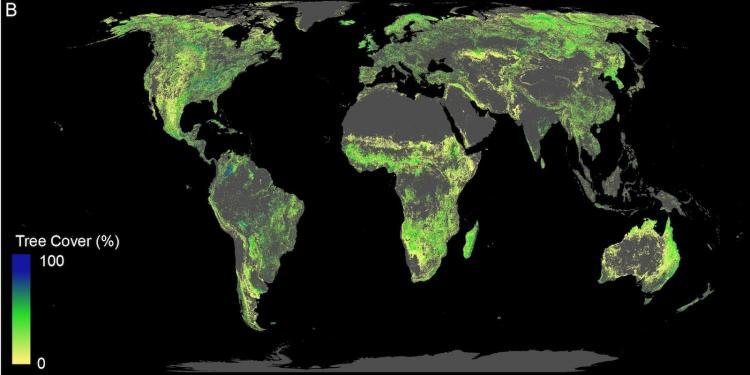
Image Source: Science.
But even if it is done, it will take some decades to curb the carbon amount as trees will take that time to grow. “It is vitally important that we protect the forests that exist today, pursue other climate solutions and continue to phase out fossil fuels from our economies in order to avoid dangerous climate change,” Crowther said.
Get the latest reports & analysis with people's perspective on Protests, movements & deep analytical videos, discussions of the current affairs in your Telegram app. Subscribe to NewsClick's Telegram channel & get Real-Time updates on stories, as they get published on our website.














